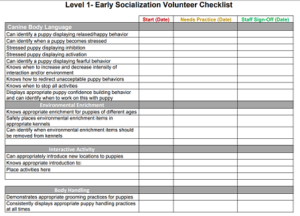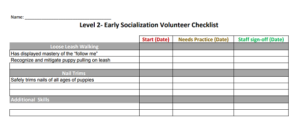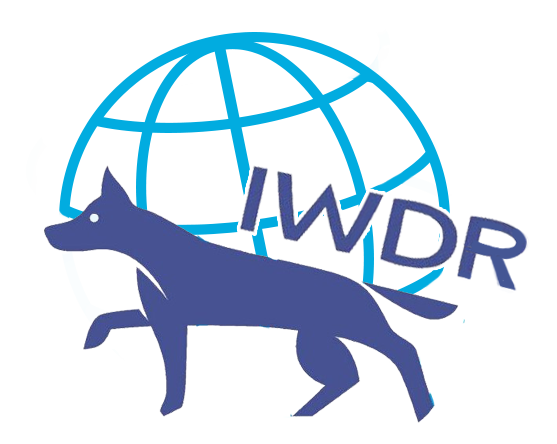Early Socialization - Volunteers
Starting with Volunteers
Trained volunteers are also very helpful with early socialization. If you already have volunteer help at your organization, selecting the best candidates for helping with early socialization is imperative to ensure the consistency with early socialization protocols and procedures. Below are a few desired qualities of volunteers when selecting help with early socialization:
- Reliable- They follow other procedures and protocols in your organization
- Dependable- They faithfully attend scheduled shifts each week
- Invested – In the continuous improvement of your organization and the mission
When first starting, it is best to select a small number of volunteers to begin your program and then increase your number of volunteers in the future. Once a small number of volunteers have been selected, an interest meeting or email that explains the goal behind the implementation of the early socialization program should take place. During this meeting, explain the expectations of the volunteer role as well as shift details.
Once interested volunteers are identified, an orientation can be held to review protocols and procedures as well as additional training. Below are suggested topics to discuss during the orientation:
- Shift details- Where? When?
- Canine Body Language overview
- Skills puppies will learn in early socialization program
- Review protocols – i.e. biosecurity and socialization
After the orientation, volunteers are prepared for their first shift to assist with early socialization.
Volunteer Training & Utilization
Below is an example of the first and second shift objectives when training new volunteers.
First Shift
- The volunteer observes early socialization
- Discuss the goal of each activity before starting
- Talk through reactions of puppies and how to make puppy successful
- Have the volunteer take notes on the sessions
Second Shift
- Review protocol of activity before beginning
- Volunteer assists with early socialization
One way to track your early socialization volunteer’s progress with learning protocols is to create a skills checklist. This way, after you have trained the volunteer, you can record that and easily look back to the document in the future when assigning duties to volunteers. If you have different volunteers with different levels of experience, having different levels to signify their experience and training can be helpful. An example of levels and corresponding skills are demonstrated in the Level 1 and Level 2 checklists below:
Click Here to Download: Level 1 Early Socialization Volunteer Checklist – Sheet1

Click here to Download: Level 2 Early Socialization Volunteer Checklist.xlsx – Sheet1

After completing the level 2 checklist, volunteers can be then used to help train other volunteers and to assist with other socialization tasks as needed.
